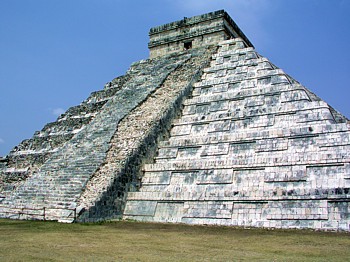
|
|
 |
|
Inhabited since 2000 years B.C. , the peninsula has been later inhabited by the Yucatan Mayans and Itza' populations part of the 29 different Mayan ethnic branches.
The Mayan population established itself in a 4000 km wide area that today includes the Mexican states of Yucatan ,Campeche , Quintana Roo , Tabasco e Chiapas and also some areas of Guatemala , Belize ,Honduras e Salvador.
 |
Almost totally laking of mountains or hills, Yucatan is distinguished by scarcely deep soils made of porous calcareous rocks, where rain water is easily absorbed.
The strong absorption of water creates water reservoirs and wells feeded by underground springs and known today with the name of Cenotes.
Spread all over the region , Cenotes have always been the main source of fresh water for the Mayan populations in Yucatan.
The mayan word Chenes means "well, tank or reservoir" and it's also the name of the main architectonic style of this area (Chen).
Cenotes gained a primary role in the structure of the Mayan society expecially if we consider that in Yucatan thera are almost no rivers.
 |
To understand which has been the great role of the Cenotes in the everyday mayan life , we will start by analyzing the use that in the past it's been made by the population of the town of Chichén Itzà of those wells.
The ancient mayan town of Chichén Itzà, archaeological site of primary importance for this area, is today placed midway between Merida and Cancun.
 |
The Mayan town of Chichén Itzà ,whose name means "on the border of
the well that belongs to the Itza'", had its period of maximum
magnificence around 900 D.C. and it's been inhabitated till 1200 D.C. or
more .
This town guided the rebellion against the spanish invader starting from
1518.
Unfortunately the spanish colonization succeeded (1540) bringing deep
modifications to the Mayan culture that , anyway , it's never been
completely altered.
In the last picture we see the Kukulkan piramid that's the most
interesting building in Chichén Itzà (25 meters high) used as a place of
veneration.
|
|
 |
|
Copyright 1999 Luca Ridarelli
email : luca@ridarelli.net